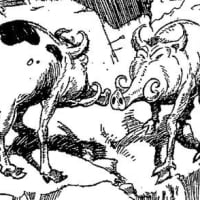Resident bow question?

Comments
-
I've typed and deleted two long replies to your question and never came close to finishing either. Way too much to try to type out.YellowSnow said:
It's a function of so many things...geology of the watersheds and real broad scale factors, but also simply the timing, number and density of the salmon runs. We dont get the succession of enormous spawning runs, in a concentrated time frame while feeding and growing conditions for trout are optimal, like coastal Alaskan streams.
Pinks and sockeye are the most numerous there but pinks barely exist in the lower 48.
Almost all of the sockeye go to a couple of isolated places. Spawning in the Columbia system happens in pitiful, warm little streams that can't support large, resident trout in any number (tule chinook) or too late in the year for trout to take direct advantage of all of that food (upper river and snake springers, bright fall chinook, coho and chum). Spawning steelhead are a non factor since they dont mass spawn and dont die on site.
The abundance of early fall chinook does contribute to some nice resident populations in the PNW, just not on the Alaska scale. Dflea can tell you that big trout exist in Puget sound streams like the Skagit as well as on the peninsula where there are some pinks as well. The Deschutes just up the road from me here has decent size trout in good densities and the chinook spawners certainly contribute to that.
TLDR...there are a few thoughts on it... -
No idea. There aren't many resident rainbows in these parts these days even in the rivers with big salmon runs. Our big salmon runs are pretty meager compared to theirs, too. Seems like they used to be more abundant. I'd be interested in an answer from someone who knows their ass from a hole in the ground.
-
I don't know shit except that things have changed. When I was a kid, we used to be able to walk out on the docks at the Oak Harbor marina, drop a line with a treble hook on it into the water, yank up an anchovy, toss it on a hook, throw it back out, and reel in a sliver. Then all of a sudden you couldn't. Anchovy never came back, silvers never followed them in because they weren't there.
We used to be able to get up in the morning, lift up rocks in the tide to catch those green sea worms, fill a bucket with them, drive said bucket to the main pier at Coupeville, toss those green worms under the pier near the pylons, and catch silver perch by the dozen. (Silver perch are super cool because they're the only fish that gives live birth. Every once in a while you'd catch a really pregnant one, and you can squeeze its belly and shoot a hundred little fish into the water that would swim off, alive. Fun to fight and good eatin' too.) I tried going back a decade or so ago, and there wasn't shit there.
Used to limit out for pinks in the Skagit on every trip growing up. Got skunked the last two times I tried.
I find anymore that if I want to catch a trout, I have to pack a rod and some lures up a steep trail and find something high. High enough that it doesn't get a lot of traffic. I've been digging Pine and Cedar near Larrabee lately. Two Little Lakes near Mad River even more, but it's a 7 mile ride in.
Long story short, I'm not that old, but fishing now isn't what fishing used to be.
/uninformative threadjack -
The typhus got them.
-
-
Pup?
-
I'm waiting for @puppylove_sugarsteel to weigh in before judging anything
-
I believe I may have found where pumpy keeps his notes on the matter

-
I had an erection for the duration of this poast.chuck said:
I've typed and deleted two long replies to your question and never came close to finishing either. Way too much to try to type out.YellowSnow said:
It's a function of so many things...geology of the watersheds and real broad scale factors, but also simply the timing, number and density of the salmon runs. We dont get the succession of enormous spawning runs, in a concentrated time frame while feeding and growing conditions for trout are optimal, like coastal Alaskan streams.
Pinks and sockeye are the most numerous there but pinks barely exist in the lower 48.
Almost all of the sockeye go to a couple of isolated places. Spawning in the Columbia system happens in pitiful, warm little streams that can't support large, resident trout in any number (tule chinook) or too late in the year for trout to take direct advantage of all of that food (upper river and snake springers, bright fall chinook, coho and chum). Spawning steelhead are a non factor since they dont mass spawn and dont die on site.
The abundance of early fall chinook does contribute to some nice resident populations in the PNW, just not on the Alaska scale. Dflea can tell you that big trout exist in Puget sound streams like the Skagit as well as on the peninsula where there are some pinks as well. The Deschutes just up the road from me here has decent size trout in good densities and the chinook spawners certainly contribute to that.
TLDR...there are a few thoughts on it... -
My boner is gone.1to392831weretaken said:I don't know shit except that things have changed. When I was a kid, we used to be able to walk out on the docks at the Oak Harbor marina, drop a line with a treble hook on it into the water, yank up an anchovy, toss it on a hook, throw it back out, and reel in a sliver. Then all of a sudden you couldn't. Anchovy never came back, silvers never followed them in because they weren't there.
We used to be able to get up in the morning, lift up rocks in the tide to catch those green sea worms, fill a bucket with them, drive said bucket to the main pier at Coupeville, toss those green worms under the pier near the pylons, and catch silver perch by the dozen. (Silver perch are super cool because they're the only fish that gives live birth. Every once in a while you'd catch a really pregnant one, and you can squeeze its belly and shoot a hundred little fish into the water that would swim off, alive. Fun to fight and good eatin' too.) I tried going back a decade or so ago, and there wasn't shit there.
Used to limit out for pinks in the Skagit on every trip growing up. Got skunked the last two times I tried.
I find anymore that if I want to catch a trout, I have to pack a rod and some lures up a steep trail and find something high. High enough that it doesn't get a lot of traffic. I've been digging Pine and Cedar near Larrabee lately. Two Little Lakes near Mad River even more, but it's a 7 mile ride in.
Long story short, I'm not that old, but fishing now isn't what fishing used to be.
/uninformative threadjack





 https://www.youtube.com/watch?v=_78X9nn3hWE
https://www.youtube.com/watch?v=_78X9nn3hWE

